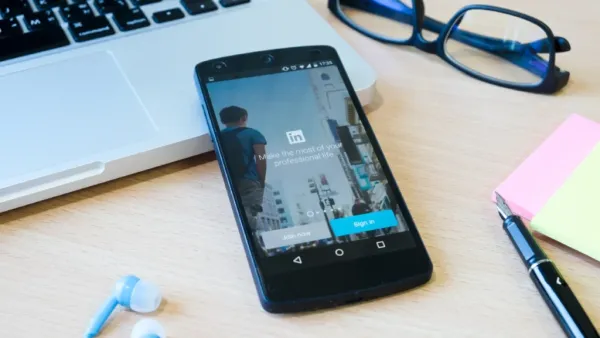
Is your LinkedIn marketing strategy actually helping your business grow, or are you just spending without knowing what’s working? That’s the challenge many B2B marketers face. It’s easy to launch a campaign, but measuring its true return on investment (ROI) takes a bit more planning and the right process.
Partnering with an expert B2B LinkedIn ads agency can simplify this journey, but you still need to understand how ROI works behind the scenes. From tracking conversions to evaluating lead quality, here’s a practical guide to measuring LinkedIn performance like a pro.
1. Define Goals That Tie Back to Real Business Outcomes
You can’t measure success without a clear target. Before launching LinkedIn ads, define what you want to achieve. Do you want new leads? More booked calls? Increased brand visibility? Be specific.
Think in terms of outcomes you can quantify. For example, instead of saying “boost brand awareness,” you might aim for “20% more profile visits this quarter” or “an increase in message responses from target decision-makers.” The more detailed your goal, the easier it is to measure whether your strategy is working and the value it delivers.
2. Look Beyond Vanity Metrics
It’s tempting to celebrate high impressions or a surge in likes, but those surface-level stats rarely tell the whole story. True ROI is measured by what happens after someone interacts with your post or ad.

Metrics like impressions and engagement can indicate that your content is gaining traction, but they shouldn’t be the final word. The real value lies in what those views lead to: visits to your landing page, completed lead forms, demo bookings, or email sign-ups. These are the actions that suggest your campaign is having a measurable impact on business growth.
Use tools such as the LinkedIn Insight Tag, Google Analytics, and CRM integrations to follow the user’s journey. A B2B LinkedIn ads agency can also help map out these data points so you get a complete view of what’s working and what’s not.
3. Monitor Cost Per Lead and Conversion Quality
A healthy ROI depends on balancing spend with value. Cost per lead (CPL) is one of the most direct ways to calculate this. Simply divide your ad spend by the number of qualified leads generated.
But not all leads are equal. A cheap lead isn’t helpful if they’re not the right fit. That’s why tracking lead quality is just as important as the number of leads you generate. Are your leads decision-makers? Are they from companies in your target industry? Do they match your ideal customer profile? These questions will give you an idea whether your LinkedIn campaigns are truly paying off or just generating noise.
You should also monitor your lead-to-close rate. If you’re generating leads but struggling to convert them, it may be time to refine your messaging, offer, or targeting. ROI doesn’t just depend on quantity—it depends on how many of those leads turn into paying customers.
4. Use Multi-Touch Attribution to Understand the Full Journey
LinkedIn ads often spark the first interaction, but very few B2B decisions are made after a single click. That’s why attribution matters. If someone clicks your ad today but signs up after reading three blogs and attending a webinar, which piece gets credit?

Multi-touch attribution models (like linear or time-decay) help map out this customer journey. They show which touchpoints are influencing decisions and where to reinvest the budget. This insight is essential for longer B2B sales cycles where prospects interact with multiple assets over weeks or even months.
By understanding how different channels and content types contribute at various stages of the funnel, you can better allocate resources, refine your content strategy, and build a more realistic view of your campaign’s ROI.
5. Review and Adjust Based on Campaign Trends
Once your campaign has been running for a while, take time to step back and review the trends. Are certain message types converting better than others? Do you see stronger results from sponsored content, InMail, or lead gen forms?
Maybe you’re seeing lower engagement on ads that used to perform well. Maybe your best-performing segment has shifted. These insights aren’t just data points—they’re clues about how your audience is evolving. Use these findings to adapt and test new formats, copy styles, or offers.
Also, don’t forget to evaluate your campaigns by audience segment. LinkedIn’s targeting tools are precise, targeting users by industry, job title, seniority, and even company size. If one audience is bringing in high-value leads while another isn’t engaging, it’s a clear sign to optimize your focus. Continuous review is key to improving ROI over time and staying ahead of platform changes or market shifts.

Conclusion
ROI from LinkedIn marketing isn’t a fixed number—it’s a reflection of how well your campaigns are aligned with your business goals. Focus on metrics that matter beyond clicks. Track your cost per lead, evaluate lead quality, and understand the full journey from awareness to action.
With the right tools and support from an expert B2B LinkedIn ads agency, you’ll not only track your ROI more accurately but also build smarter campaigns that grow your business long term. After all, great marketing isn’t about spending more—it’s about knowing what’s worth spending on.
-
Did Hrithik Roshan unfollow Jr NTR amid the dip in War 2’s earnings, here’s what we know

-
India reduced carbon intensity by 7% between FY14-24: Shripad Naik

-
Earthquake of magnitude 3.5 strikes J-K's Kupwara

-
Suspected dinosaur-era fossils found during pond excavation in Jaisalmer; GSI probe ordered

-
Berlin courts tourists as Paris and Barcelona tire of the crowds
